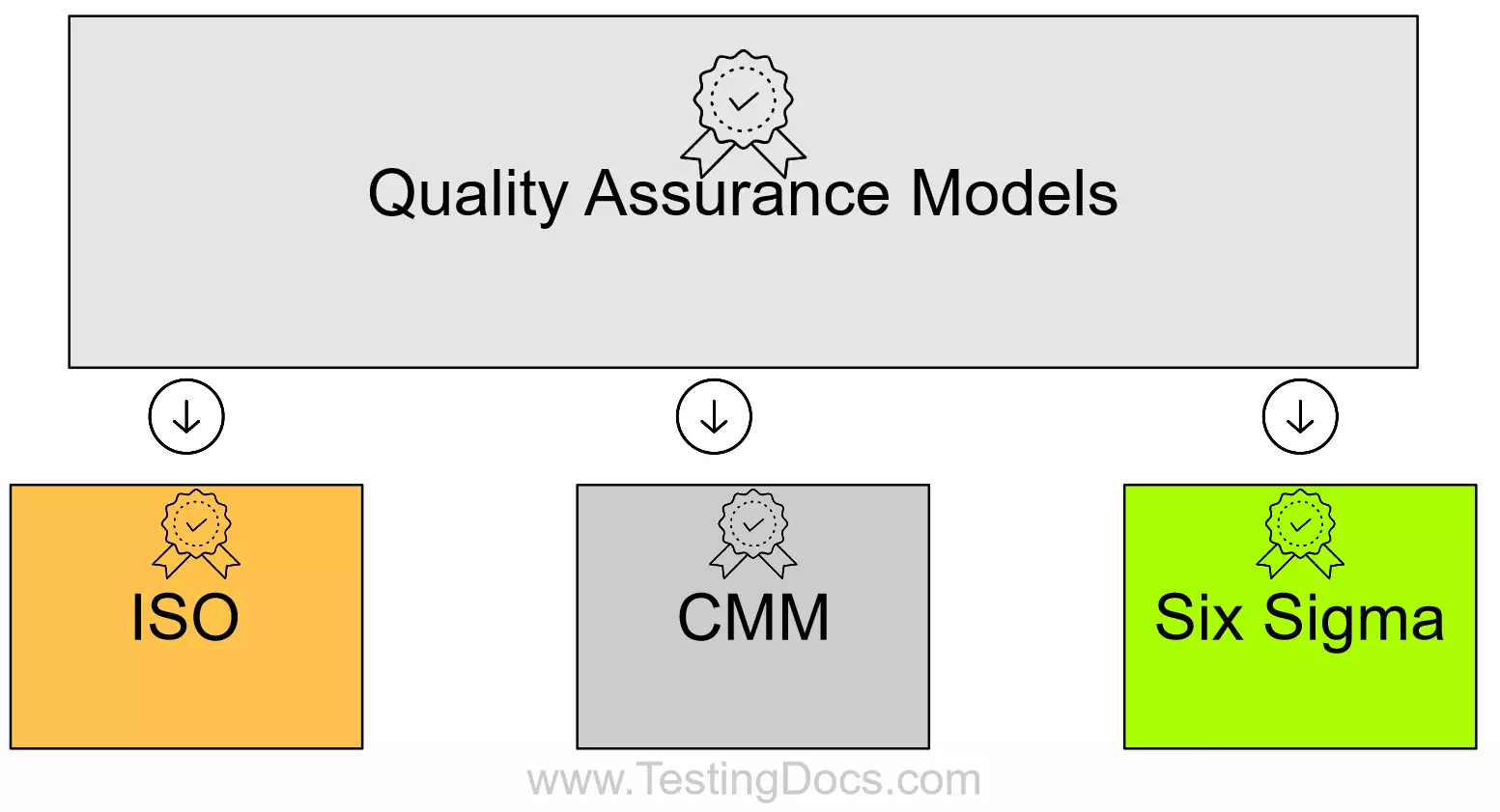Quality Assurance Models [ 2017 ]
Quality Assurance Models
Quality Assurance Models provide Organizations with a Quality Framework for producing High-Quality Goods and services and improving quality processes. They set Quality Objectives and Standards for the organization. They are generic and non-prescriptive.
The models only specify what the organization’s quality system should achieve rather than how it should achieve. An organization can also be assessed against the quality model, fill the gaps, and if applicable, be certified as conforming to the quality model.
Some Quality Assurance Models are as follows:
- ISO 9000
- CMM -Capability Maturity Model
- Six Sigma
ISO 9000
ISO is International Organization for Standardization. In Greek “ISO” means Equal. ISO 9000 series is a set of international standards on Quality Management and Assurance. The series are developed to help in the effective documentation and implementation of a Quality Management System(QMS).
The ISO 9000 standard series are as follows:
- ISO 9000 – QMS – Fundamentals and vocabulary
- ISO 9001 – QMS – Requirements
- ISO 9004 – QMS – Guidelines for Performance Improvements
Some other ISO standards:
ISO 14001 – Environmental Management
ISO 27001 – Information Security Management
More Information on ISO:
- https://www.iso.org/
CMM
The Software Capability Maturity Model(CMM) was developed by SEI(Software Engineering Institute). It is a generic quality model that fits all types of software development organizations.
It has five maturity levels that represent the maturity of software organizations and describes each level in terms of the KPA(Key Process Areas) that need to be addressed for that maturity level. Each KPA is defined by its goals and key practices.
CMMI – Capability Maturity Model Integration
P-CMM – People Capability Maturity Model.
More Information:
- https://cmmiinstitute.com/
Six Sigma
Six Sigma is a customer-focused quality model. It was first developed and used by Motorola. Six Sigma measures defects in DPMO (Defects Per Million Opportunities) and aims to reduce variation in process to Six Sigma’s 3.4 DPMO, or 99.99966% yield.
Lean Six Sigma and Process FMEA ( Failure Modes and Effects Analysis) are popular process improvement methodologies. ClickUp’s Lean Six Sigma and Process FMEA Template helps you combine them into one template to ensure that your processes run smoothly and efficiently.
To learn more about Six Sigma:
- https://www.sixsigmacouncil.org/

